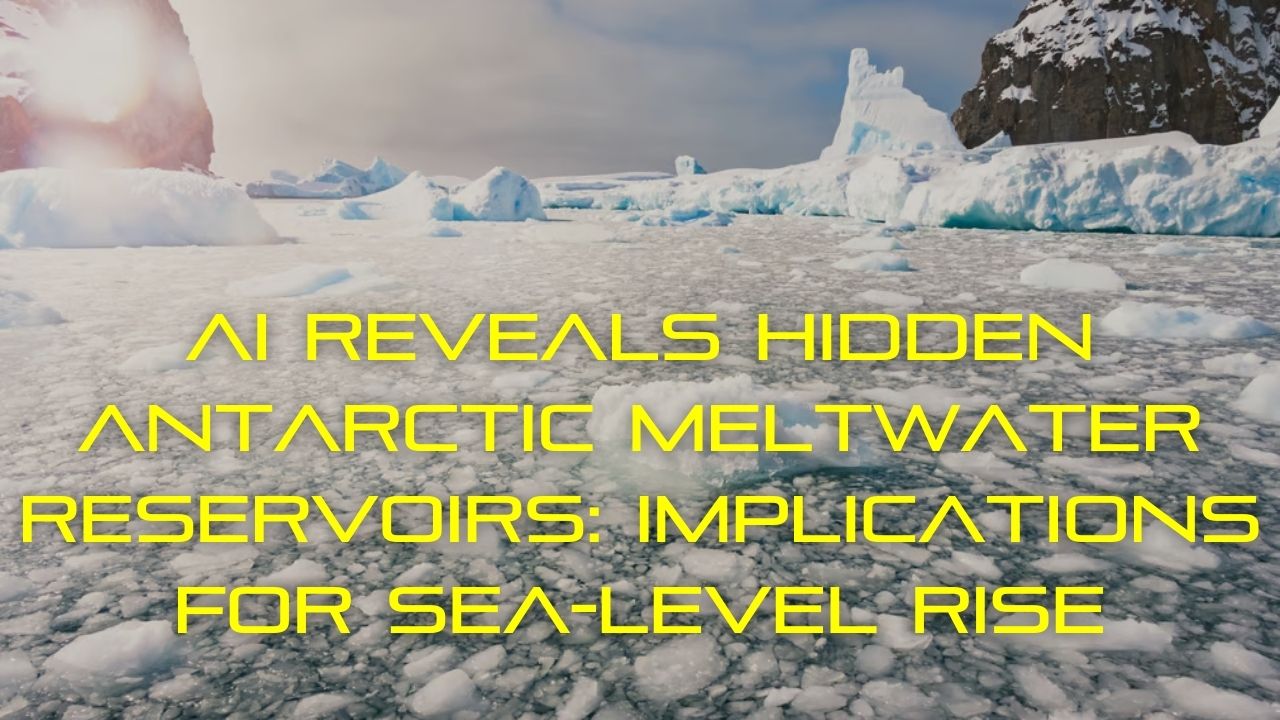Font size:
Print
AI Reveals Hidden Antarctic Meltwater Reservoirs: Implications for Sea-Level Rise
Context:
Researchers from the University of Cambridge have discovered that Antarctic ice shelves contain significantly more meltwater than previously estimated, with potential implications for global sea level rise.
More on News:
- The study, published in Nature Geoscience, used AI to map slush (water-soaked snow) across Antarctic ice shelves.
- During the peak of the Antarctic summer, a staggering 57% of all meltwater exits in the form of slush, while the remaining 43% is held in surface ponds and lakes.

Key Highlights:
- This discovery challenges existing assumptions and highlights a key gap in existing climate models. While satellite imagery has successfully mapped meltwater lakes, slush has been difficult to detect due to their resemblance to cloud shadows.
- Machine learning techniques to analyse optical data from NASA’s Landsat 8 satellite helped to distinguish slush from other features across 57 Antarctic ice shelves from 2013 to 2021.
- Slush forms when snow falls on a water surface, which produces 2.8 times more meltwater than predicted by standard climate models because it absorbs more solar heat than ice or snow alone.
Implications:
Findings are significant for ice shelf stability and sea level rise predictions.
- Increased meltwater production on ice shelves due to climate change could cause instability or collapse. These floating ice formations act as important barriers against the flow of inland glacier ice into the ocean, which can further impact coastal cities around the world.
- The presence of slush can impact the hydrofracture process, where the weight of meltwater can create or enlarge ice fractures. Although it may not initiate hydrofracture in the same way as liquid water, its existence must be taken into account for future ice shelf stability.
Future Perspectives: This research highlights the critical need to upgrade climate models to accurately incorporate the role of slush in Antarctica’s ice dynamics.
- As warming continues, parts of Antarctica currently devoid of water or slush may transform, potentially affecting ice stability and global sea levels.

What is an ice shelf?
-
- Ice shelves are extensions of thick land ice that flow out over a cold coastal ocean.
- Range in thickness from about 50 to 600 metres (160 to 2000 feet), and can extend tens to hundreds of miles from the coast, where the ice first goes afloat.
- They are floating tongues of ice that extend from grounded glaciers on land.
- Most of the world’s ice shelves fringe the Antarctic coast.
They fall into three categories:
-
- Ice shelves fed by glaciers
- Ice shelves created by sea ice and local snowfall
- Composite ice shelves





